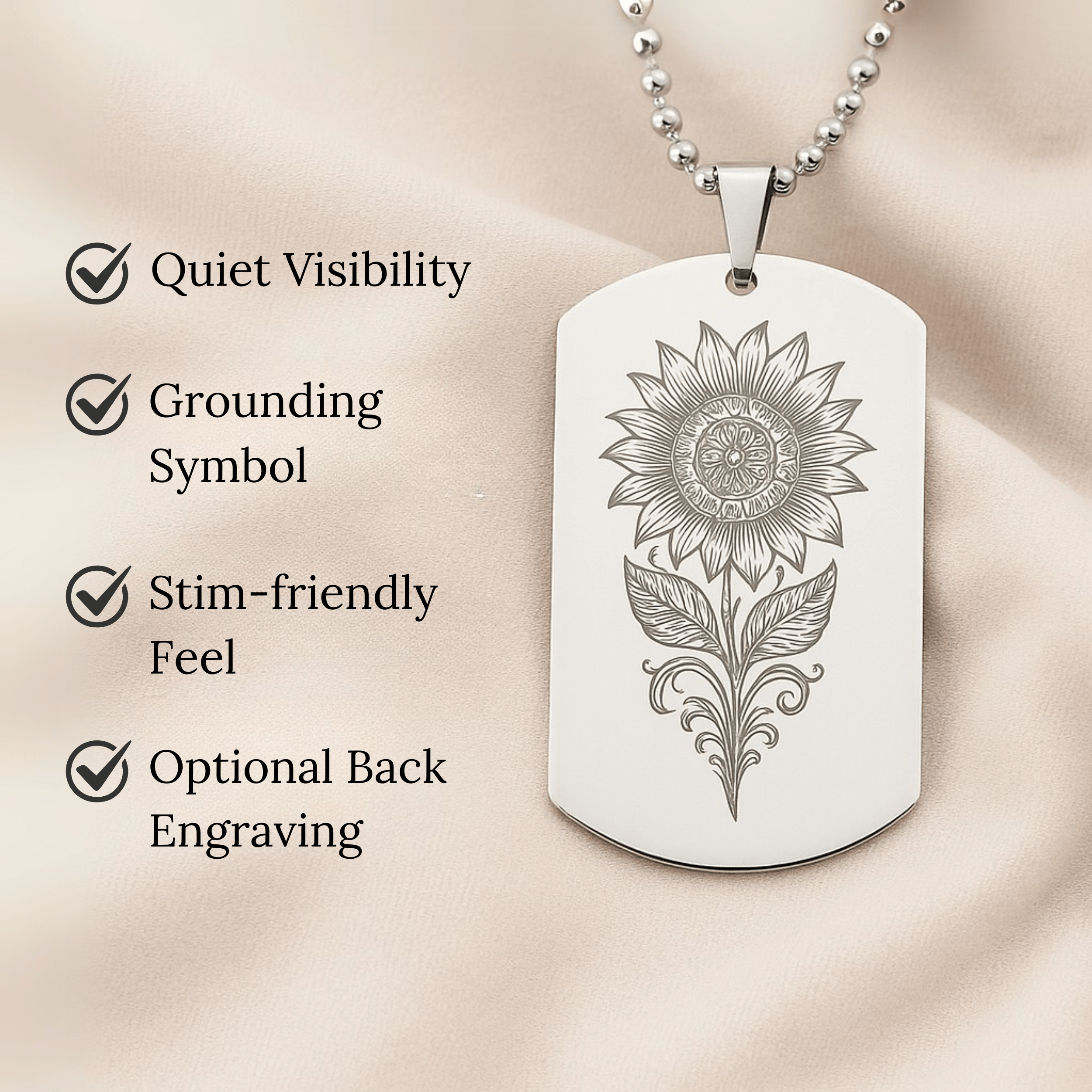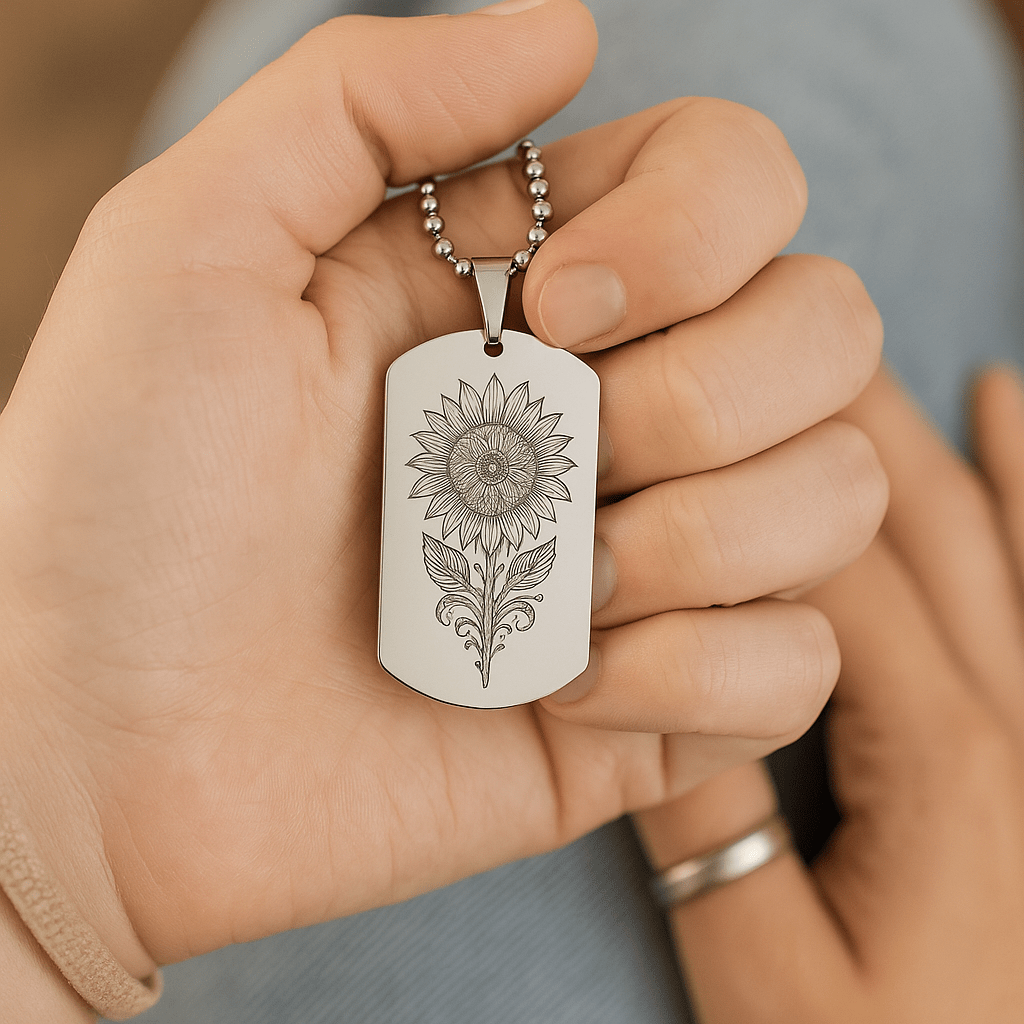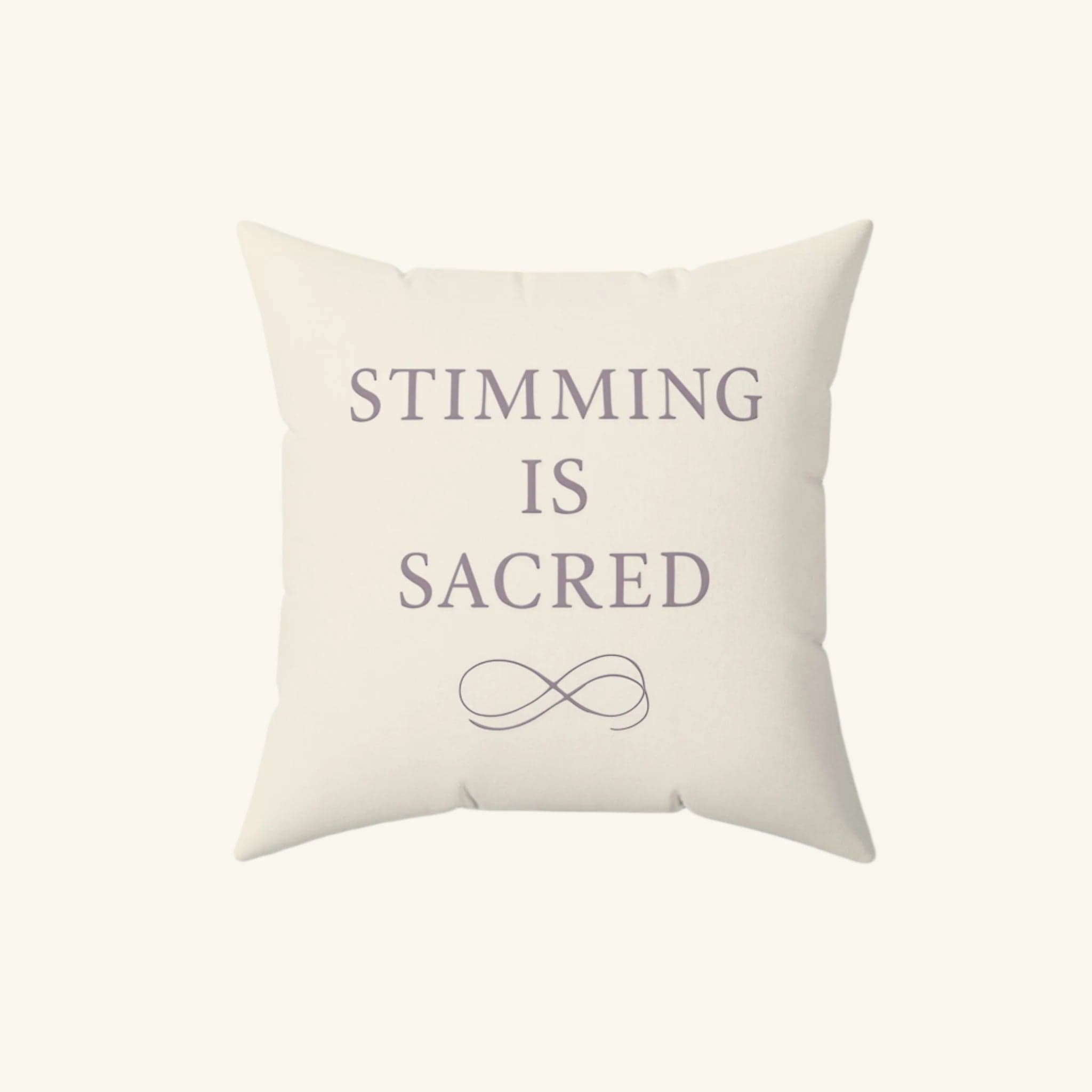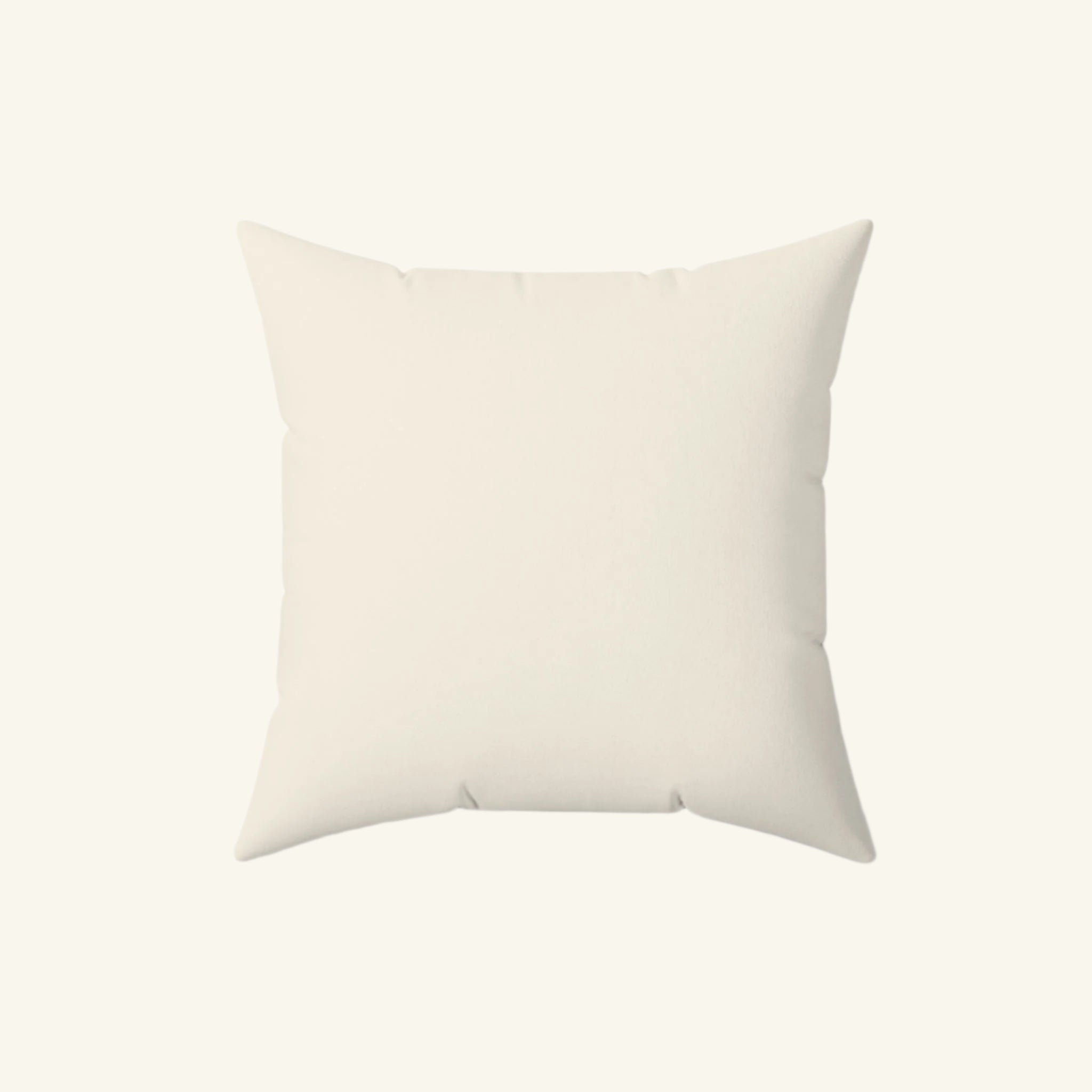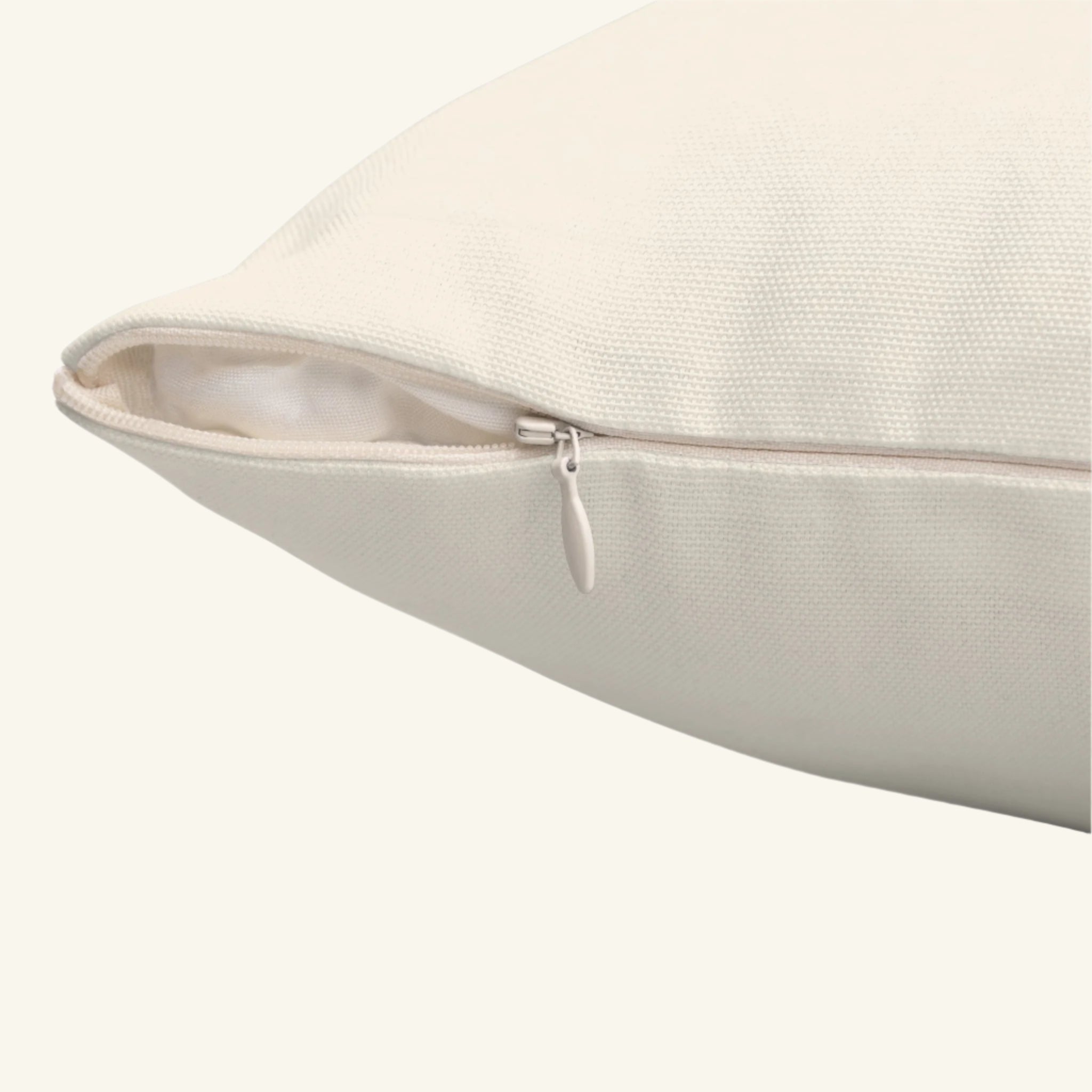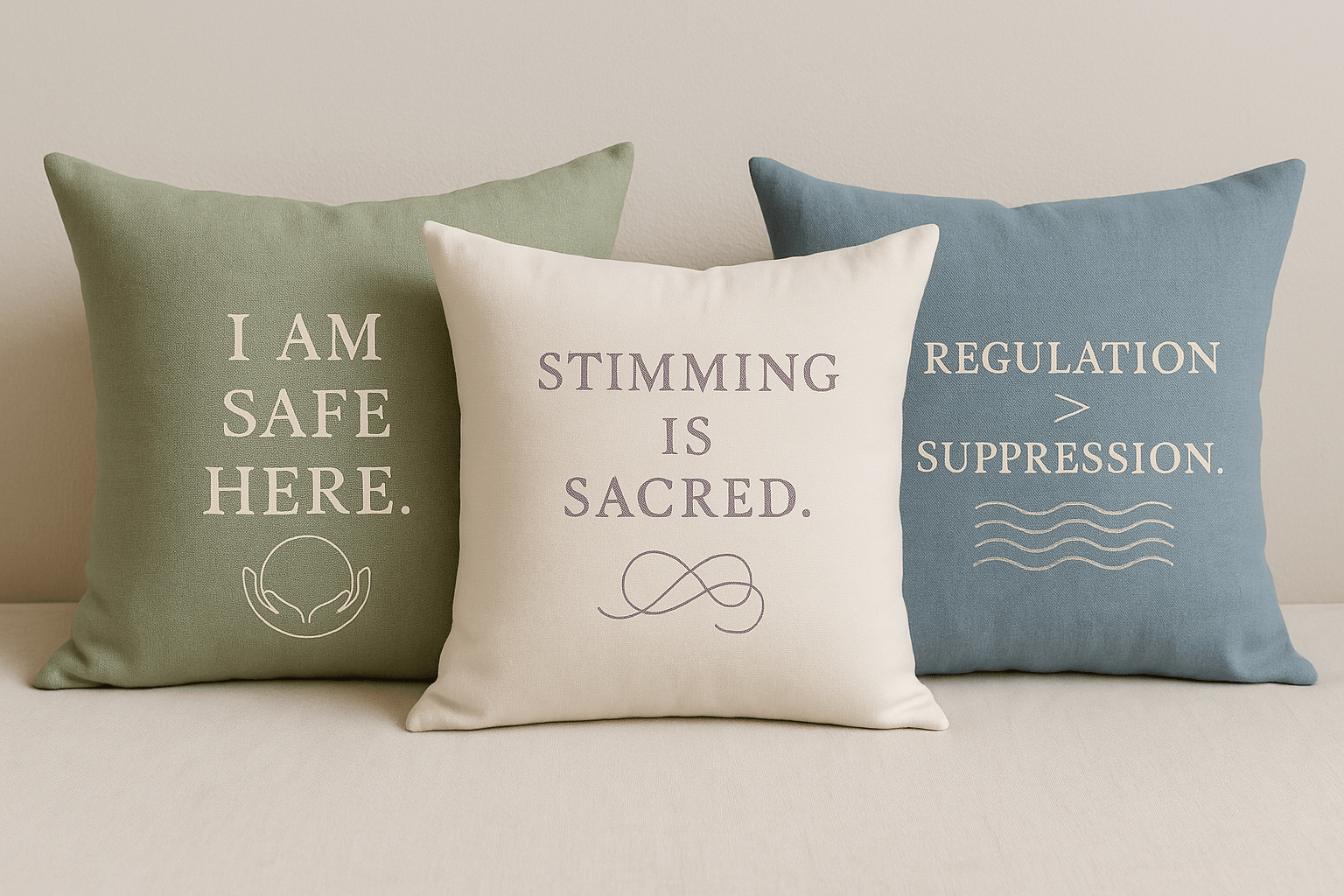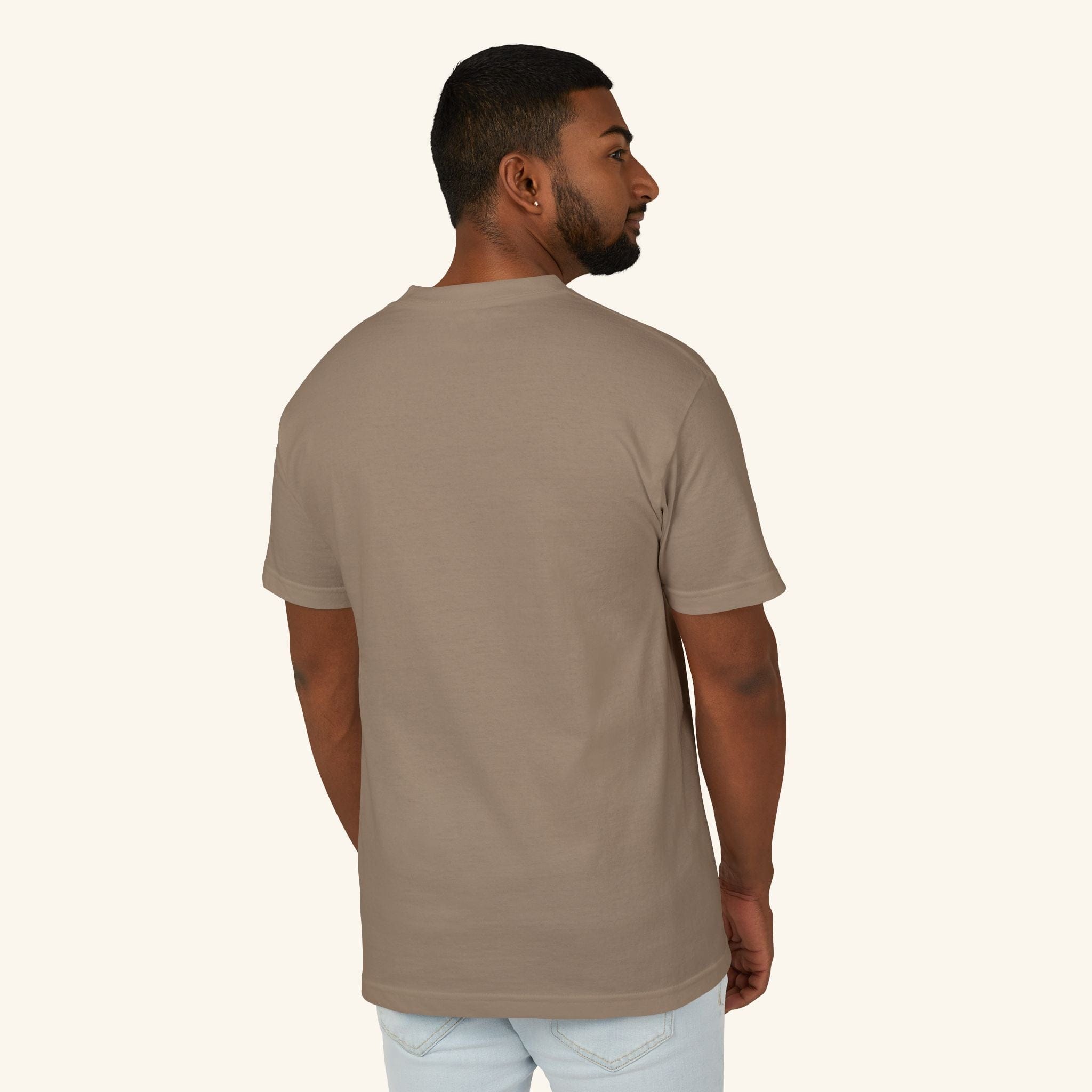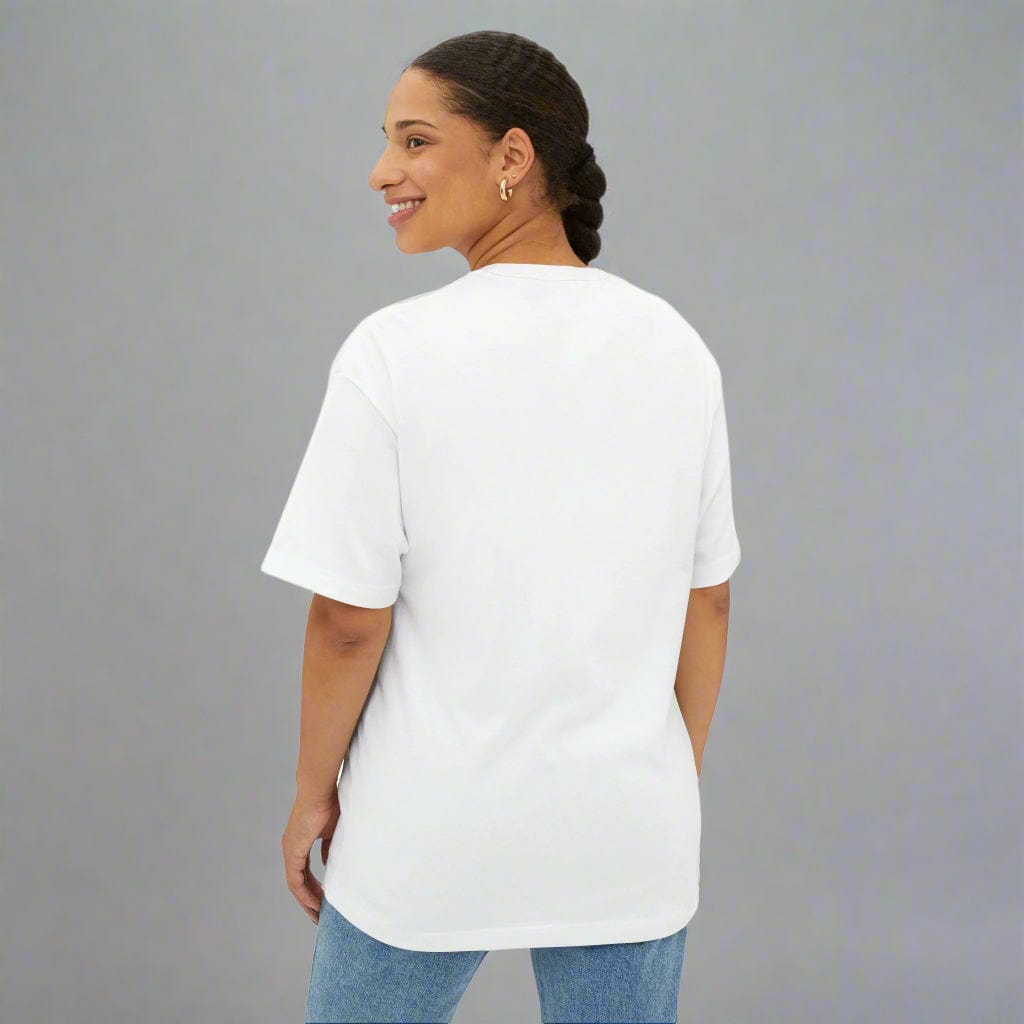Sensory Blankets for Adults: Calm, Comfort, and Emotional Regulation

Written by the HeyASD Editorial Team
Sensory comfort is more than warmth—it’s a way of reconnecting with yourself. For adults navigating stress, burnout, or sensory overload, a sensory blanket can offer calm when words and rest aren’t enough. These blankets use gentle, grounding pressure to soothe the nervous system, helping you find stillness in the midst of daily noise.
“When I first tried a sensory blanket, I realized how long I’d been living in tension. The weight didn’t feel heavy—it felt like permission to exhale.”
For autistic and neurodivergent adults, these blankets are far more than cozy accessories; they’re practical self-care tools that promote emotional regulation, better sleep, and a deeper sense of peace.
Why Adults Need Sensory Blankets Too
Your sensory needs don't simply vanish when you become an adult. Many of us face daily struggles with insomnia, overstimulation, anxiety, and burnout. If you have a hard time winding down, a weighted therapy blanket can provide a deep sense of comfort and security. The benefits of a weighted blanket extend far beyond childhood, offering a tangible solution for adult nervous systems that are constantly on high alert. All sensory blankets are designed to support sensory needs, making them inherently suitable for adults with sensory processing differences.
As adults, we often feel pressure to mask our needs to fit in. We pretend we're fine when the lights are too bright or the sounds are too jarring. A sensory blanket gives you a private and peaceful way to unmask. It’s a tool that allows you to give your body the calming input it craves, helping you to rest, recharge, and feel more centered in a world that can often feel overwhelming.
The Science of Deep Pressure for Adult Nervous Systems
The soothing feeling you get from a sensory blanket is rooted in science. These blankets apply deep pressure touch stimulation (DPTS), a therapeutic technique long used by occupational therapists. This firm but gentle pressure helps your body switch from its "fight or flight" response to its "rest and digest" mode. This process can encourage the release of serotonin, a neurotransmitter that promotes feelings of happiness and calm.
For adults dealing with work stress, sensory fatigue, or emotional exhaustion, this can be a game-changer. By helping to regulate your nervous system, deep pressure therapy can lower cortisol (the stress hormone) and increase melatonin, the hormone that helps you sleep. This is why many people find that using a sensory blanket not only calms their mind during the day but also significantly improves their sleep quality at night.
How Sensory Blankets Support Emotional Regulation
Sensory blankets can be a powerful ally against adult challenges like autistic burnout, anxiety, and emotional dysregulation. When you feel overwhelmed or disconnected, the deep pressure input from weighted blankets helps ground you in the present moment. This provides a sense of safety and containment, allowing your nervous system to settle and promoting profound relaxation. It’s a physical tool that directly addresses the body’s stress response.
This grounding effect is a form of proprioceptive comfort—it helps you reconnect with your body and its position in space. For many neurodivergent adults, this reconnection is vital. It quiets the mental noise and brings awareness back to the physical self, creating a feeling of wholeness and calm. As one person described it, "It’s the first time I felt my body relax without effort." This effortless relaxation is key for sustainable emotional regulation.
Sensory Blankets for Adults: Ways to Find Calm, Comfort, and Connection
Finding the best weighted blanket for your needs involves more than just picking a color. Unlike a simple comforter, a sensory blanket's effectiveness depends on its weight, material, and construction.
From a chunky knit Bearaby Cotton Napper to a classic quilted design, the right blanket can transform your moments of rest. Understanding your options is the first step toward finding the perfect tool for your comfort.
1. Choosing the Right Weight for Your Adult Sensory Blanket
The most critical factor when selecting from various weighted blankets is the weight itself. How do you choose the right one? A widely accepted guideline, supported by sleep medicine specialist Peter Polos, MD, is to select a blanket that is about 10% of your body weight.
This formula ensures the blanket provides enough deep pressure to be effective without feeling uncomfortably heavy. However, personal preference is key. Some people may prefer a slightly lighter or heavier feel.
-
The general rule is 10% of your body weight.
-
A range between 5% and 12% is also considered effective.
-
If you're between sizes or unsure, it's often best to start with the lighter option.
Remember, the goal is gentle pressure, not immobilization. You should be able to move comfortably underneath it. A single-person size (around 48 x 72 inches) is often better than a large one that covers the whole mattress, as it concentrates the weight on your body instead of the bed. Each tester may find a different weight perfect for them.
2. Comparing Sensory Blankets to Regular Weighted Blankets
While the terms are often used interchangeably, it can be helpful to think about the nuances. "Sensory blanket" can be seen as a broader category that focuses on the complete sensory experience, while "weighted blanket" is a specific type that uses weight as its primary feature.
A sensory blanket’s goal is total comfort, which might come from a super-soft minky texture, a cooling fabric, or a stretchy compression feel, with or without significant weight. In contrast, traditional weighted blankets are therapy blankets designed specifically to provide deep pressure through even weight distribution, often using fillings like glass beads.
Ultimately, both aim to soothe the nervous system. The best choice depends on what sensory input you find most calming—the gentle heft, the specific texture, or a combination of both. Many come with a duvet cover for easy cleaning and to change the texture.
|
Feature |
Sensory Blanket |
Regular Weighted Blanket |
|---|---|---|
|
Primary Focus |
Overall sensory experience (texture, temperature, pressure) |
Deep pressure stimulation (DPS) through weight |
|
Key Benefit |
Comfort, grounding, and tactile stimulation |
Calming the nervous system, anxiety relief, sleep aid |
|
Common Materials |
Varied: Minky, sherpa, cotton, cooling fabrics, knit |
Often cotton or polyester with internal weighted filling |
|
Weight |
Can be lightweight, weighted, or compression-based |
Specifically weighted to 5-12% of body weight |
3. Top Sensory Blanket Styles for Adults with Sensory Needs
Your sensory needs are unique, and thankfully, so are the styles of sensory blankets available. When choosing a blanket, consider what you'll be using it for and what sensations you find most comforting. Are you looking for a budget pick for occasional use or a high-quality investment for daily relaxation?
Different styles cater to different preferences. For example, a minky weighted blanket offers an ultra-soft, plush feel, perfect for cozying up. A cooling weighted blanket is designed for hot sleepers who want deep pressure without the extra warmth. High-quality knit designs offer great breathability and a stylish look.
Here are a few popular styles to consider:
-
Knit Blankets: Made from thick, woven yarn (like cotton or TENCEL), these are breathable and distribute weight evenly without beads.
-
Fleece or Sherpa Blankets: These feature a soft, fuzzy texture for maximum coziness, often with a plush minky or flannel side.
-
Cooling Blankets: Made with moisture-wicking or temperature-regulating fabrics like bamboo or lyocell to prevent overheating.
-
Classic Quilted Blankets: These have stitched pockets to keep weighted fill (like glass beads) evenly distributed.
Key Features to Look for in an Adult Sensory Blanket
When you're ready to invest in an adult sensory blanket, a few key features determine its quality and durability. Beyond just weight, the construction and materials play a huge role in how the blanket feels and how long it lasts.
Look for high-quality stitching, especially in quilted models, to prevent the filling from shifting or leaking. For knit blankets like the Bearaby Cotton Napper, a tight weave ensures better durability. Considering these details will help you choose a blanket that's more than a comforter—it's a long-lasting tool for well-being.
Material Choices for Sensory Comfort (Cotton, Sherpa, Eucalyptus)
The material of your sensory blanket directly impacts your comfort. Different fabrics offer distinct tactile experiences, so choosing one that you find pleasant to the touch is essential. Whether you prefer natural fibers or plush textures, there's a material that's right for you.
Cotton is a popular choice for its breathability and soft, natural feel, making it a great all-season option for bedding. For those who crave extra coziness, sherpa and fleece offer a warm, plush texture perfect for snuggling. Materials derived from eucalyptus, like TENCEL lyocell, are known for being silky-smooth and cool to the touch.
Here are some common materials and their benefits:
-
Cotton: Breathable, durable, and gets softer over time. A versatile choice for most people.
-
Sherpa/Fleece: Incredibly soft, warm, and cozy. Often made from polyester, it provides a plush, comforting feel.
-
Eucalyptus (TENCEL/Lyocell): Known for being exceptionally soft, smooth, and moisture-wicking, making it ideal for hot sleepers.
-
Minky: A type of plush polyester fabric that is velvety soft and gentle on the skin.
Breathability, Filling, and Maintenance Considerations
Beyond the outer fabric, practical features like breathability, filling, and maintenance are crucial for long-term satisfaction. A blanket that's difficult to clean or makes you overheat won't be a tool you reach for often.
Breathability is especially important for hot sleepers. Look for blankets made from natural fibers like cotton or eucalyptus, or choose an open-knit style that allows for airflow. The filling also matters; micro-glass beads are denser and quieter than plastic poly-pellets. Easy maintenance is another key factor. A machine washable blanket or one with a removable, dryer-safe cover makes cleaning much more manageable.
Keep these points in mind before you buy:
-
Breathability: Knit designs and fabrics like cotton or TENCEL offer better airflow than dense polyester or fleece.
-
Filling: Glass microbeads are a higher-quality, quieter filling compared to plastic pellets.
-
Washability: Check if the blanket is machine washable or if it has a removable duvet cover. Always follow the care instructions.
-
Durability: Strong stitching in quilted blankets and tight weaves in knit styles ensure the blanket will last.
Everyday Benefits of Using Sensory Blankets for Adults
Integrating a sensory blanket into your daily routine can bring about a wide range of positive effects, extending well beyond mere physical comfort. For many adults, particularly those who experience high levels of stress or anxiety, a sensory blanket—often referred to as a weighted blanket—becomes an invaluable aid in coping with the demands of contemporary life.
The primary benefit of a sensory blanket lies in its ability to provide deep pressure stimulation. This gentle, even pressure mimics the sensation of being hugged or held, which has been shown to trigger the release of neurotransmitters such as serotonin and dopamine. These "feel-good" chemicals help regulate mood and promote relaxation, making it easier to unwind after a hectic day.
Consistent use of a sensory blanket can lead to reduced anxiety levels and deeper relaxation. It is especially helpful for individuals who struggle with insomnia or find it difficult to fall asleep due to racing thoughts. By creating a calming environment and helping quiet both mind and body, these blankets support better sleep quality and longer periods of restorative rest.
Beyond aiding sleep, the sense of security provided by a sensory blanket can have lasting effects throughout your waking hours. Many users report feeling more at ease, focused, and resilient when faced with everyday stressors. Sensory blankets have also been found useful for people living with certain conditions such as autism spectrum disorder (ASD), attention-deficit/hyperactivity disorder (ADHD), or sensory processing challenges.
Incorporating a sensory blanket into your daily self-care routine may involve wrapping yourself in it while reading or watching television, draping it over yourself during meditation sessions, or using it as part of your bedtime ritual. Over time, you might notice improvements not only in sleep but also in overall emotional well-being and stress management.
Ultimately, whether you are seeking relief from anxiety, support for better sleep, or simply a greater sense of calm throughout your day, integrating a sensory blanket into your life can be an effective—and soothing—way to enhance your mental and physical health.
Supporting Sleep Quality, Anxiety Relief, and Emotional Regulation
One of the most celebrated benefits of sensory blankets is their ability to improve sleep quality. Research and user experiences show that deep pressure can help people fall asleep faster and stay asleep longer. This is particularly helpful for adults with insomnia, ADHD, or anxiety.
The calming pressure helps reduce anxious feelings, making it a powerful tool for anxiety relief. By boosting serotonin, the blanket creates a sense of well-being that can quiet racing thoughts. This makes it easier to transition into a restful state, both at bedtime and during stressful moments in the day.
For adults with sensory processing disorders or ADHD, a sensory blanket can aid focus and reduce fidgeting.
-
Better Sleep: The pressure promotes melatonin production, helping regulate sleep cycles.
-
Anxiety Relief: The hug-like sensation soothes the nervous system and lowers stress.
-
Emotional Regulation: It provides a grounding sensation that helps manage feelings of overwhelm.
-
Improved Focus: The calming input can reduce restlessness and improve concentration during quiet activities.
Community Voices: Real Experiences with Sensory Blankets
For many autistic adults, a sensory blanket is more than a comfort tool—it’s a way to regulate, decompress, and reclaim peace after sensory or emotional overload. These personal reflections capture how something so simple can change daily life:
“I keep mine on the couch—it’s my go-to reset button after work. That first moment of stillness helps me shift from masking to simply being.”
“It helps me transition between social time and quiet time. It’s more than comfort—it’s regulation. I feel calmer, more grounded, more myself.”
“I used to think rest was laziness. Now, when I use my sensory blanket, I understand it’s care. It gives me permission to stop holding everything together.”
These experiences remind us that comfort isn’t indulgence; it’s a language of self-acceptance. A sensory blanket can be the bridge between exhaustion and ease, helping you reconnect with your body and your needs.
Comfort as Autistic Self-Advocacy
Using a sensory blanket goes beyond simple comfort, it is a meaningful step toward self-acceptance and empowerment. For many autistic adults, daily life can present overwhelming sensory challenges. Environments filled with unpredictable sounds, bright lights, or uncomfortable textures can contribute to stress, fatigue, and even shutdowns or meltdowns. Sensory blankets, often providing deep pressure touch stimulation, have been scientifically shown to help regulate the nervous system by promoting relaxation and reducing anxiety.
Historically, society has overlooked or trivialized the sensory needs of adults—particularly those on the autism spectrum—often labeling them as “childish” or unnecessary. This misconception ignores the reality that sensory tools are just as vital for adults as they are for children. By choosing to use a sensory blanket, you challenge these outdated views and assert your right to accommodations that support your mental health and daily functioning.
Incorporating sensory supports into your routine can improve sleep quality, decrease chronic stress levels, and enhance overall emotional well-being. It’s also an important aspect of maintaining independence—recognizing when you need additional support and proactively seeking it out demonstrates self-awareness and resilience.
Ultimately, embracing comfort through a sensory blanket is an act of self-compassion. It sends a clear message: your needs are valid at any age. Whether at home after a long day or in moments of acute overwhelm, giving yourself permission to use supportive tools is not only practical but transformative. Remember that nurturing your body’s needs is fundamental to living authentically—and there is strength in honoring what makes you feel safe and whole.
Key Takeaways
- Sensory blankets use gentle deep pressure to calm the adult nervous system and reduce anxiety.
- They support better sleep, emotional regulation, and burnout recovery for autistic and neurodivergent adults.
- Choosing the right weight, fabric, and texture ensures comfort without overheating or restriction.
- Styles like knit, sherpa, or cooling blankets offer personalized sensory comfort for every need.
- Embracing sensory tools is a form of self-advocacy and self-acceptance—comfort is not a luxury, it’s essential care.
Conclusion
As adults, our need for comfort never disappears—it simply changes shape. Sensory blankets offer a gentle, science-backed way to calm the body and quiet the mind. They help transform moments of overwhelm into moments of grounding, supporting both rest and resilience.
“Using my sensory blanket isn’t about escape—it’s about feeling safe enough to rest. It helps me come back to myself after the world’s been too loud.”
By embracing comfort as a valid form of care, we reclaim self-advocacy and self-trust. Explore our Sensory Blankets Collection—each design created to meet you where you are, offering calm without compromise.
Discover the Calm You’ve Been Craving
Sensory blankets designed by and for the autism community. Soft, grounding, and made to bring peace to your day.
Explore Sensory BlanketsFrequently Asked Questions
What weight should an adult sensory blanket be for effective calming?
For effective calming, choose a weighted blanket that is approximately 10% of your body weight. This provides enough deep pressure input to be soothing without feeling restrictive. It's better to have the weight concentrated on you, so a smaller blanket is often more effective than one that drapes over the entire mattress.
How do I clean and care for a sensory blanket for adults?
Check the manufacturer's label first. Many high-quality blankets are machine washable on a gentle, cold cycle. For easier maintenance, use a removable duvet cover that you can wash and put in the dryer regularly. Air-drying the inner blanket is often recommended to preserve its integrity.
Where can I buy high-quality sensory blankets for adults?
You can find high-quality sensory blankets directly from brands like HeyASD. Many options, from budget picks to premium models, are also available on large online retailers. Specialty stores focusing on sensory products also offer curated collections for adults.
What are sensory blankets and how do they differ from regular blankets?
Unlike regular blankets, sensory blankets are therapy blankets designed to provide sensory input. Weighted blankets, a type of sensory blanket, use weight for deep pressure therapy to calm the nervous system. Others might focus on specific textures or compression to provide comfort, which standard blankets do not offer.
How can sensory blankets benefit adults with anxiety or sensory processing disorders?
For adults with anxiety or sensory processing disorders, these blankets offer significant benefits. The deep pressure touch stimulation provides powerful anxiety relief by calming the nervous system. This can lead to better sleep, improved emotional regulation, and an increase in calming neurotransmitters like serotonin.
What materials are commonly used in sensory blankets, and how do they affect comfort?
Common materials include breathable cotton, plush minky or flannel, and soft polyester. Cotton is great for all-around use and breathability. Minky and flannel provide extra softness and warmth, much like a cozy comforter, making them ideal for those who seek a plush, tactile experience for maximum comfort.
Are there specific features to look for when choosing a sensory blanket for adults?
Yes, look for even weight distribution to ensure consistent pressure. For durability, check for strong stitching that will stand the test of time. If you're a hot sleeper, prioritize a cooling weighted blanket made from breathable materials. Finally, consider whether it's machine washable for easy care.
On This Page
Frequently asked questions
Can adults use weighted or sensory blankets every night?
Are sensory blankets suitable for people with chronic pain or fibromyalgia?
Do sensory blankets help with ADHD or restlessness?
How long should I use a sensory blanket to feel the benefits?
Can sensory blankets replace therapy or medication for anxiety?
What’s the best way to store a sensory blanket when not in use?
Are cooling sensory blankets effective for hot sleepers?
How can I tell if my sensory blanket is too heavy?
Do sensory blankets really help adults with autism sleep better?

About the HeyASD Editorial Team
Autistic‑owned • Values‑led • Sensory‑friendly design
We are autistic creators, writers, and advocates dedicated to producing resources that are practical, sensory-aware, and grounded in lived experience. Our mission is to make information and products that support the autistic community accessible to everyone, without jargon or condescension. Learn more about our team.
This article is written from lived autistic experience and an evidence-aware perspective. It is for general informational purposes only and should not be taken as medical, legal or therapeutic advice.
Always consult a qualified clinician or occupational therapist for individual needs and circumstances.

About Our Autism Blog
HeyASD isn’t just a store, it’s a calm, supportive space created by and for autistic adults. Our blog shares sensory-friendly tips, identity-affirming stories, and heartfelt resources for navigating life as an autistic person. Whether you're late-diagnosed, exploring your needs, or supporting someone you love, you're welcome here.
Thank you for reading. We hope these resources bring comfort and clarity.













